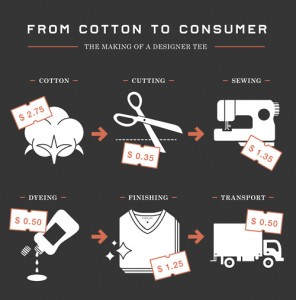Tuesday Morning: Monitor
Y me lamento por no estar alla
Y hoy te miento para estar solos tu y yo
Y la distancia le gano al amor
Solo te veo en el monitor— excerpt, Monitor by Volovan
Sweet little tune, easy to enjoy even if you don’t speak Spanish.
Speaking of monitor…
Flint Water Crisis: Michigan State Police monitoring social media
Creeptastic. MSP is following social media communications related to Flint water crisis, which means they’re watching this blog and contributors’ tweets for any remarks made about Flint. Whatever did they do in the day before social media when the public was unhappy about government malfeasance?
MDEQ personnel told Flint city water employee to omit tests with high lead readings
The charges filed last week against two Michigan Department of Environmental Quality and a Flint city employee were related to the manipulation and falsification of lead level tests. From out here it looks like Mike Glasgow did what the MDEQ told him to do; with the city under the control of the state, it’s not clear how Glasgow could have done anything else but do what the state ordered him to do. Which governmental body had higher authority under emergency management — the city’s water department, or the MDEQ? And what happens when personnel at the MDEQ aren’t on the same page about testing methodology?
MDHHS too worried about Ebola to note Legionnaire’s deaths in 2014-2015?
Michigan’s Department of Health and Human Services director Nick Lyons maintains a “breakdown in internal communication” kept information about the Legionnaire’s disease outbreak from reaching him. He also said MDHHS was focused on Ebola because of its high mortality rate overseas. There were a total of 11 cases of Ebola in the U.S. between 2014 and 2015, none of which were diagnosed or treated in Michigan. Meanwhile, 10 people died of Legionnaire’s due to exposure to contaminated Flint water in that same time frame. Not certain how MDHHS will respond to an imported biological crisis when it can’t respond appropriately to a local one created by the state.
Other miscellaneous monitoring
- Charter Communications and Time Warner tie-up approved, with caveat (Reuters) — Charter can’t tell content providers like HBO they can’t sell their content over the internet – that’s one of a few exceptions FCC placed on the deal. I think this is just insane; the public isn’t seeing cheaper broadband or cable content in spite of allowing ISPs to optimize economies of scale. Between Charter/TWC and Comcast, they’ll have 70% of all broadband connections in the U.S.
- Mitsubishi Motors fudged its fuel economy numbers for last 25 years (AP) — This investigation is exactly what should happen across EU, because EU-based manufacturers have done this for just as long or longer. And the EU knows this, turns a blind eye to the tricks automakers use to inflate fuel economy ratings.
- Goldman Sachs has a brand new gig: internet-based banking (Fortune) — This is the fruit of GS’ acquisition of General Electric’s former financial arm. Hmm.
- BAE Systems has a nice graphic outlining the SWIFT hack via Bangladesh’s central bank (BAE) — Makes it easy to explain to Grampa how somebody carted off nearly a billion dollars.
Toodledy-doo, Tuesday. See you tomorrow morning!

